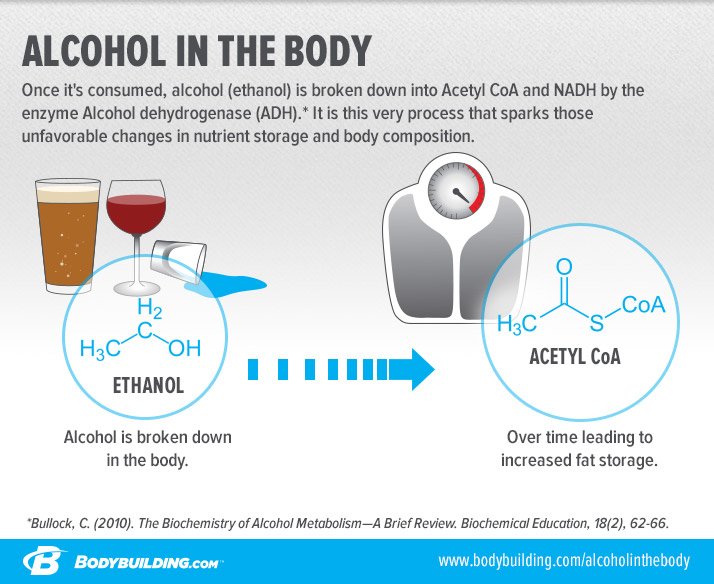Curious about how many beers it takes to feel drunk? Unlock the secrets of alcohol metabolism and understand your limits.

Image courtesy of Anete Lusina via Pexels
Table of Contents
Alcohol consumption has been a central part of social gatherings and celebrations for centuries. However, the question of how many beers it takes to get drunk is a popular and intriguing one. In this blog post, we will delve deep into the science behind alcohol metabolism, individual tolerance levels, and various factors influencing intoxication.
alcohol-and-its-effects” name=”understanding-alcohol-and-its-effects”>Understanding Alcohol and Its Effects
Alcohol, also known as ethanol, is a central nervous system depressant that affects the brain and body. When alcohol is consumed, it is absorbed into the bloodstream through the stomach and small intestine. The liver then metabolizes alcohol at a constant rate, typically processing about one standard drink per hour.
Alcohol affects the brain by enhancing the effects of the neurotransmitter gamma-aminobutyric acid (GABA), which inhibits brain activity, leading to feelings of relaxation and euphoria. However, consuming too much alcohol can result in impaired coordination, slowed reaction times, and slurred speech.
Various types of alcoholic beverages, such as beer, wine, and spirits, contain different amounts of alcohol by volume (ABV). Beer typically has a lower ABV ranging from 4-6%, while spirits can have a higher ABV of 40% or more.
Factors Influencing Intoxication Levels
Individual tolerance levels play a significant role in how many beers it takes to get drunk. Factors such as age, sex, weight, metabolism, and genetics all contribute to a person’s ability to process alcohol effectively.
Body weight is a crucial factor in alcohol absorption. A larger individual with more body mass will generally be able to consume more alcohol before feeling intoxicated compared to someone with a smaller build. Additionally, men tend to have a higher tolerance for alcohol than women due to differences in body composition and enzyme activity.
Genetics also play a role in alcohol tolerance, as some people may inherit variations in genes that affect how their bodies metabolize alcohol. These genetic differences can result in individuals experiencing intoxication more quickly or slowly compared to others.
Calculating Alcohol Consumption and Intoxication
Understanding the concept of standard drinks can help individuals gauge their alcohol consumption. A standard drink is typically defined as containing 14 grams of pure alcohol, equivalent to about 12 ounces of beer, 5 ounces of wine, or 1.5 ounces of distilled spirits.

Image courtesy of www.bodybuilding.com via Google Images
The blood alcohol concentration (BAC) scale is used to measure the level of alcohol in a person’s bloodstream. BAC is influenced by factors such as the amount of alcohol consumed, the rate of consumption, and the individual’s body weight and metabolism. In most jurisdictions, a BAC of 0.08% or higher is considered legally intoxicated.
It’s essential to know your limits when it comes to alcohol consumption and to drink responsibly. Keeping track of how much you’ve had to drink, pacing yourself, and staying hydrated can help prevent overconsumption and reduce the risk of intoxication.
Tips for Managing Alcohol Intoxication
Recognizing the signs of alcohol poisoning, such as confusion, vomiting, slowed breathing, and unconsciousness, is crucial for knowing when to seek help. If you suspect someone has alcohol poisoning, call emergency services immediately.
If you find yourself feeling intoxicated, there are several strategies you can use to sober up quickly and safely. Drinking water, eating food, and getting some rest can help your body metabolize alcohol more efficiently. It’s also important to avoid driving or engaging in activities that require coordination while under the influence.
For those who struggle with alcohol dependency or addiction, seeking professional help from a healthcare provider or therapist is essential. There are resources available to support individuals in managing their alcohol consumption and leading a healthier, more balanced lifestyle.
In conclusion, the question of how many beers it takes to get drunk is a complex one influenced by various factors such as alcohol metabolism, individual tolerance levels, and genetic predisposition. By understanding the science behind alcohol intoxication and practicing responsible drinking habits, individuals can enjoy alcohol in moderation while minimizing the risks associated with excessive consumption. Remember to know your limits, stay informed, and prioritize your health and well-being when it comes to alcohol consumption.
How does alcohol affect the body?
Alcohol is a central nervous system depressant that affects the brain by enhancing the effects of neurotransmitters, leading to relaxation and impaired coordination when consumed in excess.
What factors influence how many beers it takes to get drunk?
Factors such as weight, metabolism, genetics, and tolerance levels all play a role in determining individual intoxication levels.
How can I calculate my alcohol consumption and intoxication levels?
Understanding standard drinks, blood alcohol concentration (BAC), and pacing yourself while drinking can help gauge your alcohol intake and manage intoxication levels.
What are some tips for managing alcohol intoxication?
Stay hydrated, eat food, rest, and avoid activities requiring coordination. Recognize signs of alcohol poisoning and seek help if needed. If struggling with alcohol dependency, seek professional support for a healthier lifestyle.
Powered by Texta.ai Blog Automation
Leave a Reply